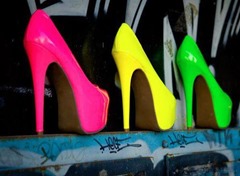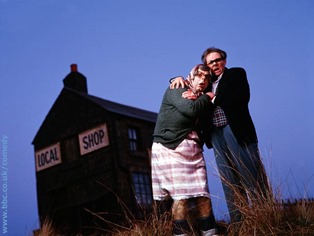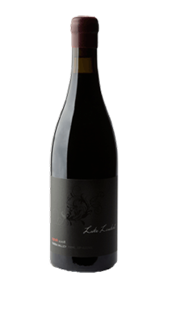1. You might love Chardonnay and think you hate it

Chardonnay in Australia is not the same style of wine it was ten years ago. There are very few Chardonnays that are “too oaky” or heavy. Chardonnay can be made totally crisp, citrussy and light, like with Chablis, fuller bodied and richer, or anywhere in between. Take a gamble, you might just love it. Which leads me on to reason #2…
2. Wine drinking is often swayed by trend and fashion

Ten or fifteen years ago, wine lists looked completely different. They’d be full of Chardonnay, a bit of Riesling, probably a fair bit of Shiraz, Cabernet and Merlot, but barely any Sauvignon Blanc. There’d also be the odd Sherry or two. Sure, there are a lot more varieties planted today than there were back then, but remember, the popular styles of wine come and go. Like fluoro clothes, which seem to be back.
Cheap and nasty Sauvignon Blanc, as with vanilla milkshake Chardonnay, is not good wine. It’s often sweet, when people assume they’re drinking a dry wine. Acid is sometimes added. It can be made from huge yields, which is never good for quality. Hence many of the supermarket brands that are effectively cleanskins with a marketed label. Yes, it might taste fruity, but that doesn’t make it good. The Sauvignon Blanc boom will have its time, and like the Chardonnay we now hate, we’ll ask ourselves “what was I thinking?”. You’re drinking a trend, not a good wine.
3. Barossa Valley Shiraz can actually overpower food

Steak and Shiraz – an Aussie tradition. But our favourites from Barossa Valley can often be 15%+ alcohol and be huge and syrupy wines. Many of these wines actually spoil the meal you eat them with. European wines rarely go above 14% alcohol, and this usually makes them more versatile for the table. I’m not trying to discredit Barossan Shiraz – it can be one of Australia’s most special wines. It just shouldn’t be consumed with every red meat dish. One of the best styles to try is the GSM, or Grenache, Shiraz and Mourvedre blend. They’re generally slightly lighter than most straight Shiraz and are blended to improve each variety’s shortcomings. Our powers combined…
4. Crouchen Tiger, Hidden Riesling

Riesling is not a statement that a wine is sweet. A hugely popular Australian sweet wine is a blend of Crouchen and Riesling, but it doesn’t have much in common with most Aussie Riesling, which is generally bone dry. I love sweet wines – sweet does not mean cheap or low quality. Many of the worlds’ best sweet wines are made from Riesling in Germany. What makes these wines so good is the balance between the sugar and the acidity of the wine. They are sweet but not sweet in the sense of sugar syrup.
Riesling can be made with zero residual sugar, as well as probably with more sugar than Coca Cola postmix syrup, and then anywhere in between. As I said, most Australian Riesling is dry. Try one from the Clare Valley region in South Australia, and you will find it hard to resist its citrussy, floral charms. Even better now, many producers are using a scale on the label which signifies the sweetness of the Riesling.
Riesling was the variety that got me so passionate about wine. Discovering Riesling was like knowing a secret that nobody would believe if you told them.
5. Regional wine and food

In Australia, we’re a multicultural society with limited winemaking experience and a diversity of cuisine. This means that our favourite local wines might not be the best option for every meal. One of the most important rules for wine and food matching is to match local food with local wine. It doesn’t have to be too specific, but at least, if you’re going with a tomato based pasta, maybe try an Italian red.
Asian food is very big in Australia due to both our location, its deliciousness, and lightness on the wallet (meaning there is more money left to spend on wine). An important thing to remember with spicy food – chilli clashes with high alcohol and high tannins. So don’t bother trying to drink a 2010 Reserve Cabernet with your Vindaloo. Whilst it’s far from local, some of the best wines to have with Asian food are Riesling (dry to medium sweet), Pinot Gris, Gewürztraminer. Basically what I’m trying to say that if chilli was introduced to Alsace a long time ago, they’d be happy folk. If reds are more your thing, stick to fruity or lighter reds like Beaujolais, Rosé and Dolcetto.
All that said, a barbecued kangaroo fillet rubbed with native spices and paired with a rugged Australian Mataro can be a thing of beauty.
6. Don’t forget the fortifieds!

Fortified wines are something that most people don’t consider until they remember how good they are when tasting one at a cellar door or similar. Australia produces some of the worlds’ best. Tawnies, Muscat, Apera and Topaque (that’s Port, Muscat, Sherry and Tokay for those who still call all bubbles Champagne).
Tawnies are rich and most reminiscent of red table wine when young, but age into beautiful, sweet, leathery delights. My first wine memory was of drinking a tawny from a port sipper at an age that I shan’t discuss. Needless to say, I loved it. I think Tawnies or Ports are one of the best ways to start appreciating red wine if you don’t like them yet.
Muscat is a purely hedonistic style. Raisins and dark chocolate, gaining in complexity with the older blends. A real crowd pleaser at cellar doors.
Topaque is not so well know, but is equally unique to Australia. Made from the Muscadelle grape, it’s usually lighter than Muscat, and can sometimes taste of tea leaves and caramel.
Apera. Sherry. So misunderstood. It’s not a Granny drink. Try telling that to the people of Jerez. If you think it is, then I challenge you to describe what they can taste like. Bone dry, salty, umami Fino and Manzanilla styles, then nutty, deep, medium dry Amontillado and Palo Cortado, all the way towards the richer, walnutty, woody tones of Oloroso. Then there are the sweet styles of Cream sherry and the brilliant, luscious Pedro Ximenez – liquid raisins and velvet. Sherry is one of the most food friendly categories of wine on the planet, even though it’s not really a category of wine. It’s too complicated to elaborate, but try one next time you go out for tapas.
7. Alternative varieties

Australia is a huge continent. It’s nearly 14 times bigger than France. Yes, the majority is too warm for producing quality wines, but still, it’s massive. By only concentrating on a few common varieties, we might miss out on some that suit our climate so well. Warm regions like McLaren Vale are discovering that varieties such as Fiano, Marsanne, Roussanne and Viognier can produce excellent wines in spite of the heat.
One of my biggest gripes is how conservative Margaret River can be. It’s settled on Cabernet Sauvignon, Merlot, Chardonnay and blends of Semillon and Sauvignon Blanc. There’s also a lot of mediocre Shiraz produced and some producers dare to make Riesling and Pinot Noir. A few producers are experimenting with Tempranillo, but I’ve only tasted a couple of decent examples and the vines are still too young. We need to start supporting alternative varieties so that Australian regions can find what works best for them. Because it’s not just going to be the common French ones. The quality of wine produced in this country is excellent, but only just the tip of the iceberg.
8. Trust those who work in the wine trade

Wine is a niche product and it takes those with a lot of passion to pursue it as a career. I should know; I left a high paying Government job to work in wine retail. There is no better reward for me than to have a customer come back and tell me that they’ve enjoyed something I’ve recommended that’s out of their comfort zone, and then to choose another wine left of the middle. Wine merchants, writers and sommeliers are paid to help guide you, they’re not just there to pour your glass or put a bottle in a brown paper bag. Trust them like you trust a pilot.
9. Just because it’s convenient, doesn’t mean it’s good wine

It’s not that well known amongst the general public, but many of the wines bought from Australia’s duopoly of supermarkets and their chain liquor stores are owned and made by those companies. They could be adding 1000% markup from purchasing low quality, excess grapes and turning them into pleasing, convenient brands that aren’t far from the rest of your weekly groceries. Thankfully, Australia doesn’t allow liquor to be purchased directly from supermarkets, however many do have liquor stores attached, making it a one stop shop for many consumers. Supermarket wines are killing the diversity of the industry in places like the UK, and Australia is not far behind. Support an independent. They know and love the products they are selling and want you to drink something good, and not just take your money.
10. Not everyone wants to spend much money on wine

Wine can be expensive. It’s sometimes easy to just look at what’s on special and grab a few bottles, even if you’ve never tried it before. Many people don’t really care about what they’re drinking as long as it’s white or red. And that’s completely fine. Just know that sometimes, if you try something unfamiliar (but still cheap!), you might actually find that the wines are better for the price. South Australian Riesling, Italian Montepulciano, and fortifieds are often bargains in my books. If you like Cabernet, and don’t want to spend much, you’re better off buying a Cabernet Merlot blend, which is usually mostly Cab Sauv anyway, and usually better quality for the price. As for cask wines, I can’t give you much advice except for the fact that most come from regions that can certainly grow grapes but not so much produce quality wine…



















